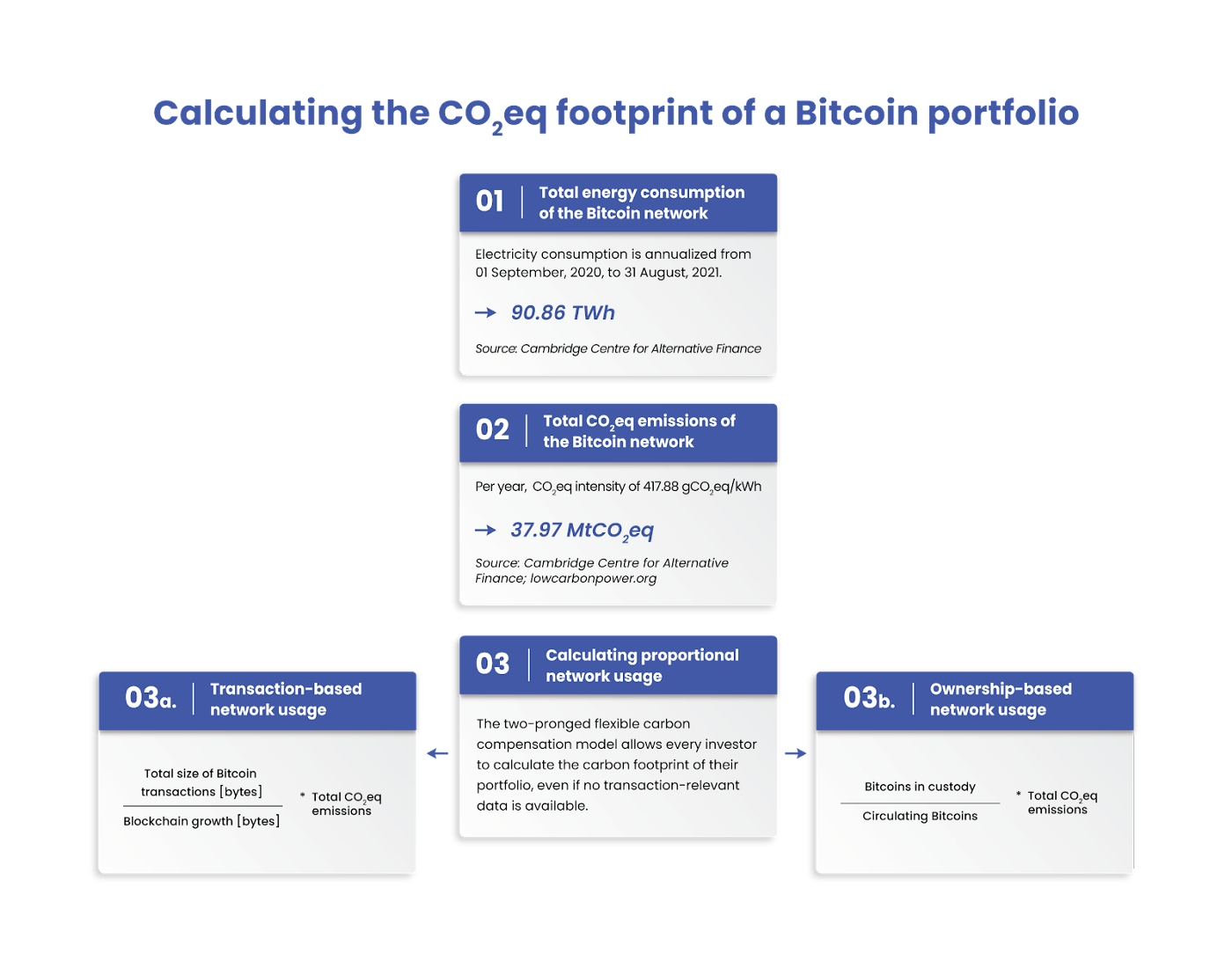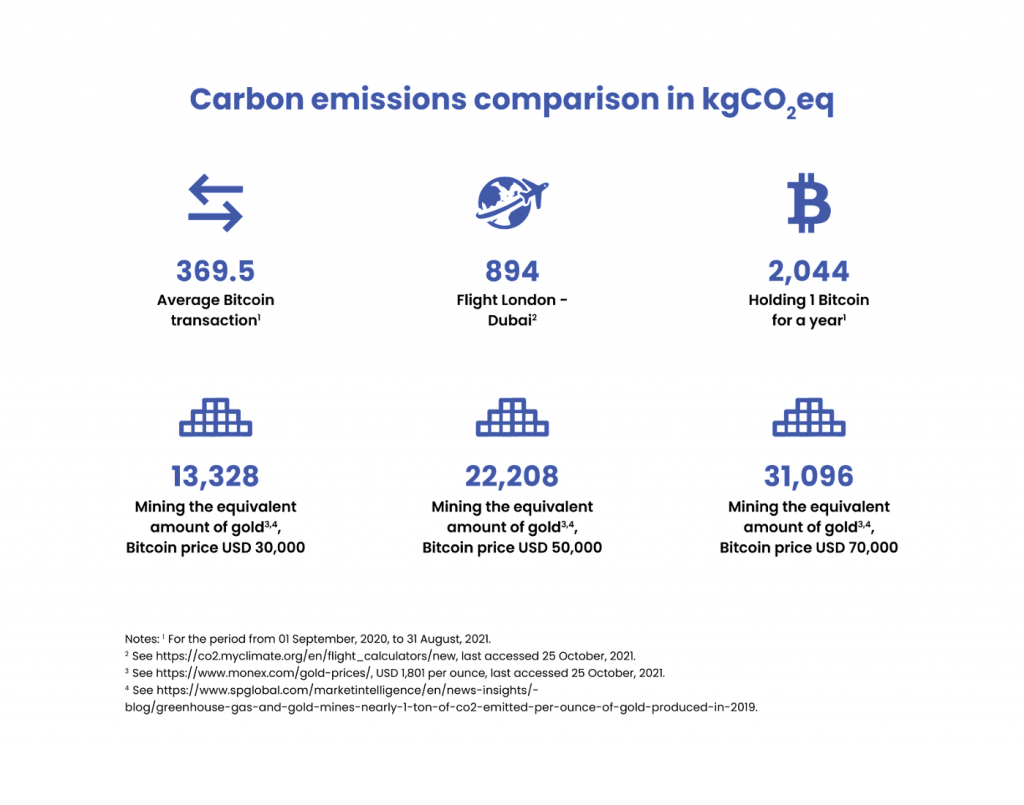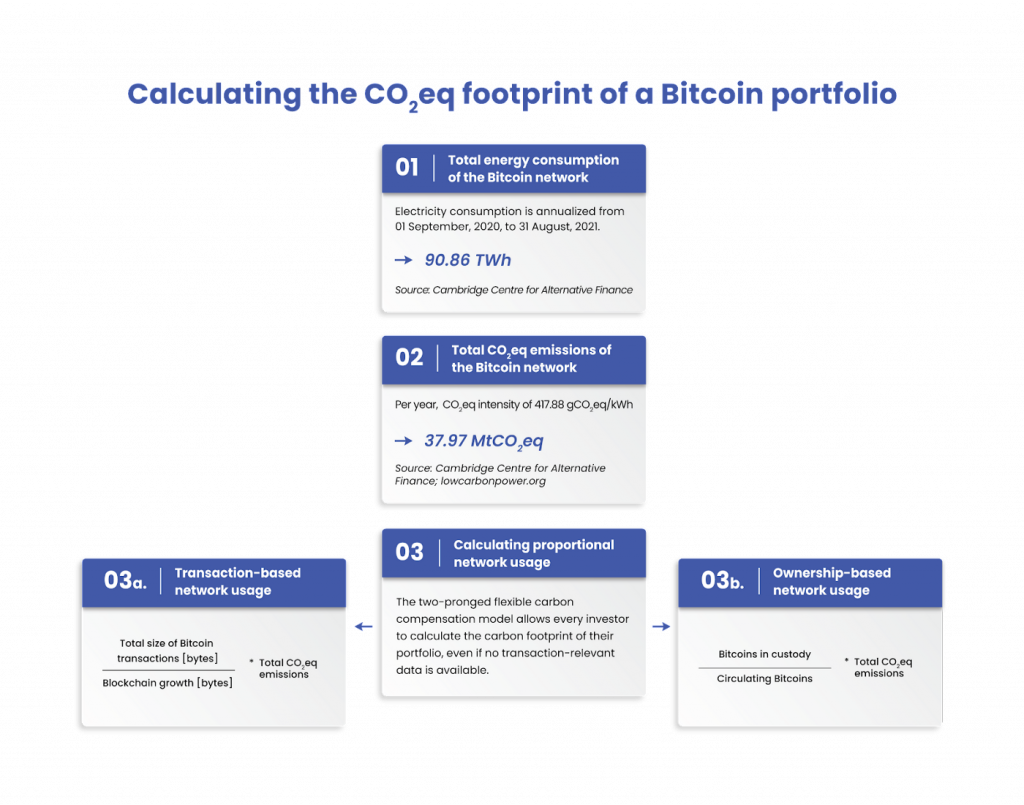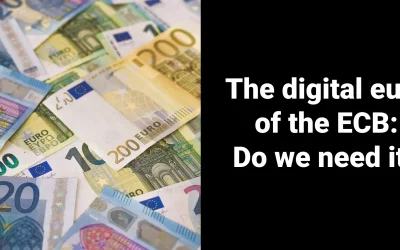Although it has only existed for less than 13 years, Bitcoin has had an eventful history. The environmental impact of Bitcoin — particularly mining — is becoming an increasingly pressing issue in this regard. The important thing here is that electricity consumption should not be moralized. Otherwise, Christmas lighting would also be questioned in large parts of the globe. The real question is which energy sources are being used — renewables or fossil fuels. In fact, the consumption profile of the Bitcoin network is similar to an average German kilowatt-hour. Specifically, the kilowatt-hour from a German socket is no less “brown” or “green” than the consumption profile of the Bitcoin network.
Likewise, Bitcoin helps people in countries that do not have such stable institutions as in Europe or the United States. Bitcoin helps people as a “technology institution”, in countries with very high inflation or unstable or corrupt regimes. This benefit to many people worldwide should therefore be contrasted with the power consumption — more correctly, the power consumption profile of the Bitcoin network. However, one of the biggest criticisms of Bitcoin in recent years has been its electricity consumption and the associated CO2eq emissions, i.e., the greenhouse gases emitted, measured as CO2 equivalents that result from maintaining the Bitcoin network. – Authors: Philipp Sandner, Constantin Lichti
Stricter Sustainability Regulations
Bitcoin investors, who either invest directly through a crypto exchange or gain exposure to this crypto asset indirectly through financial products such as funds or exchange traded notes (ETNs), may come under pressure in the future as new regulations include much stricter sustainability rules and disclosure requirements. The European Union’s Sustainable Finance Disclosure Regulation (SFDR), which has been in effect since March 10, 2021, requires asset managers and financial market participants to disclose ESG-related information and categorize their products according to certain sustainability criteria. In this context, the EU wants to increase transparency with regard to sustainability risks and negative sustainability impacts through financial products. Information on this will become mandatory for financial market players from July 2022 (so-called “Level 2” disclosures). Therefore, the companies concerned will have to collect and disclose corresponding data on their products.
In general, it is important to remember that other industries and companies will also be affected by the stricter sustainability regulations. For example, technology companies that operate large data centers or infrastructures with high power consumption could also be affected. It should be noted that all financial products offered by EU market participants are subject to the disclosure requirements of the SFDR. Therefore, for proper assessment and comparability, Bitcoin’s carbon footprint needs to be put in the context of, for example, the carbon footprint of gold mining or other areas (see Figure 1). Such regulation, as has happened in the EU, is of course to be expected for other countries as well.
Bitcoin’s Power Consumption — Boon or Bane?
First, it is important to note that the energy issue cannot be generally attributed to blockchain technology and cryptocurrencies. On the contrary, blockchain solutions can also provide energy savings in certain processes. Blockchains with a proof-of-work (PoW) consensus mechanism, such as Bitcoin, on the other hand, do indeed consume a lot of power. This consensus mechanism serves two important functions: first, transactions are verified immutably and stored securely in the blockchain. Second, in the case of Bitcoin, new Bitcoins are “generated” until all 21 million Bitcoins are, approximately around the year 2140, in circulation. The latter function is often compared to gold mining since resources are invested in finding new gold — not in “maintaining” gold or “enabling” gold transactions. Thus, the high power consumption ensures the maintenance of Bitcoin’s monetary system and the integrity of the network. To some extent, one could say that Bitcoin is secured by the electricity it consumes. This aspect is extremely important: the PoW consensus mechanism protects the Bitcoin network from cyberattacks and is therefore an essential part of its security architecture. The resulting extremely high level of security is the basis for Bitcoin’s survival.
It is critical, however, to look at the electricity-related carbon footprint from a neutral perspective. In doing so, you need to know where the consumed electricity comes from. In terms of carbon emissions, it is important to distinguish between renewable sources of electricity and fossil fuels. Only then will it be possible to overcome Bitcoin’s shortcomings, strengthen its role as an alternative, ESG-compliant financial product, and make Bitcoin a more sustainable investment.
While Bitcoin itself could hypothetically be mined with 100% renewable, carbon-neutral energy, this is not the case today as miners are incentivized purely to optimize their profitability by keeping their costs as low as possible. According to the polluter-pays principle, it would seem natural for CO2eq to be offset by mining companies or mining pools as they purchase generated electricity for their operations (Greenhouse Gas Protocol Scope 2 emissions). However, this assumption would be infeasible to implement and falls short. This is because all parties that invest in Bitcoin — whether directly via crypto exchanges or indirectly through financial products such as ETNs or funds — benefit from mining operations and, thus, ultimately from their power consumption. Therefore, we propose two approaches that we recently published in a joint study by the Frankfurt School Blockchain Center (FSBC) and INTAS.tech and tested using a Bitcoin ETP.
Transaction-Based Network Usage
Based on the above explanations, a more realistic approach involves determining proportional accountability for Bitcoin’s CO2eq footprint based on the utility stakeholders enjoy. Since, as mentioned earlier, Bitcoin mining has the function of adding new transactions to the blockchain, a quantifiable method is needed to calculate the CO2eq emissions of transactions. The most accurate approach is therefore to determine the proportion of storage used within the blockchain relative to the total growth of the Bitcoin blockchain during a given period. This proportion is finally multiplied by the CO2eq emissions resulting from the electricity mix consumption of the entire Bitcoin network during this period.
Figure 2: Two-Pronged Flexible Carbon Footprint Calculation Model
Ownership-Based Approach
The transaction-based approach generally excludes parties who do not have access to their transaction-related data. In addition, a significant portion of Bitcoin’s utility is derived from its long-term macroeconomic model: the store of value. Given these facts, we propose a computational model that focuses on the proportion of Bitcoins held relative to Bitcoins in circulation for a given period. Figure 2 illustrates our two-pronged flexible approach to calculate the carbon emissions of a Bitcoin portfolio.
What Could a CO2 Offset Cost?
Companies could apply the above approaches to transactions and ownership of Bitcoins to calculate their carbon footprint, which they should then offset. Below are example results from our study, covering the analyzed period from September 1, 2020 to August 31, 2021:
Electricity consumption of the Bitcoin network: maintaining the global Bitcoin network required 90.86 TWh and 37.97 MtCO2eq in the given period. We distinguish between renewable electricity sources and fossil fuels by considering the total electricity mix of each country to convert Bitcoin’s electricity consumption into its carbon footprint.
Transaction-based network usage: An average Bitcoin transaction has a size of 670 bytes, which corresponds to an estimated carbon footprint of 369 kgCO2eq. At a market price of $50 on the EU Emissions Trading System per ton of CO2eq, it costs $18.47 to offset an average Bitcoin transaction.[1] We do not want this figure to be misinterpreted: A transaction can transfer single US dollars or hundreds of millions of US dollars. In addition, companies such as crypto exchanges aggregate tens of thousands of users on a few Bitcoin wallets, and only a small subset of transactions may be conducted on the network (e.g., daily net inflows or net outflows). Assessing the carbon footprint of Bitcoin transactions must be done with great circumspection. In addition, since our calculations, the price of CO2 has increased. Consequently, the numbers above are subject to large fluctuations over time.
Ownership-based approach: Holding one Bitcoin over the examined period of one year corresponds to a carbon footprint of 2.04 tCO2eq. At a price of $50 per tonne of CO2eq, the offset for holding one Bitcoin over one year costs $102.20.
Comparing Bitcoin’s CO2 Emissions
As shown in Figure 1, a flight from London to Dubai causes about 894 kgCO2eq. Mining an equivalent amount of gold at a Bitcoin price of $50,000 equates to a carbon footprint of over 13 tCO2eq. The most recent estimate of the world’s total annual CO2 emissions is 45,874 MtCO2eq. Thus, Bitcoin has a total footprint of 0.08% of the world’s CO2eq.
Conclusion
It is important not to take these results out of context in any way. They are best-guess estimates. Exact electricity consumption cannot be determined at this time due to several factors. For an accurate calculation of an investor’s carbon footprint, the situation must be considered individually depending on the company’s business approach (i.e., simple investing, asset management, crypto exchanges, or custodians). It is expected that the results of such calculations will need to be verified and audited by specialized service providers in the future.
In this vein, we see an opportunity for all investors, asset managers, crypto exchanges and custodians to get involved and take responsibility for their associated carbon footprint on the Bitcoin network. In doing so, the goal should not only be to demonstrate corporate social responsibility, but also to add value to make Bitcoin a more sustainable investment in terms of its carbon footprint.
About the Study
The study comprises 34 pages and can be downloaded here (780 kB, direct link to PDF).
[1] See https://www.statista.com/statistics/1241719/carbon-trading-prices-worldwide-by-select-country/.
Remarks
If you like this article, we would be pleased if you would forward it to your colleagues or share it on social networks. More information about the Frankfurt School Blockchain Center on the Internet, on Twitter or on Facebook.
Constantin Lichti is a research assistant and project manager at the Frankfurt School Blockchain Center (FSBC), and also works for the KOSMoS research project. Furthermore, he is responsible for project proposals and grants as well as studies published at the FSBC. As a doctoral candidate his research interests include public blockchains and their individual adoption, as well as how the discourse on blockchain technology is reflected in (social) media. He graduated from the Technical University of Munich with a master’s degree in industrial engineering and management. You can contact him via email (constantin.lichti@fs-blockchain.de) and LinkedIn.
Prof. Dr. Philipp Sandner has founded the Frankfurt School Blockchain Center (FSBC). From 2018 to 2021, he was ranked among the “top 30” economists by the Frankfurter Allgemeine Zeitung (FAZ), a major newspaper in Germany. He has been a member of the FinTech Council and the Digital Finance Forum of the Federal Ministry of Finance in Germany. He is also on the Board of Directors of FiveT Fintech Fund and Blockchain Founders Group — companies active in the field of blockchain startups. The expertise of Prof. Sandner includes crypto assets such as Bitcoin and Ethereum, decentralized finance (DeFi), the digital euro, tokenization of assets, and digital identity. You can contact him via mail (m@philippsandner.de) via LinkedIn or follow him on Twitter (@philippsandner).
Benjamin Schaub is a senior consultant at INTAS.tech. His interests include blockchain use case development and integration in the financial industry, as well as crypto custody. You can contact him via email (benjamin.schaub@intas.tech) or LinkedIn (https://www.linkedin.com/in/benjamin-schaub/).






